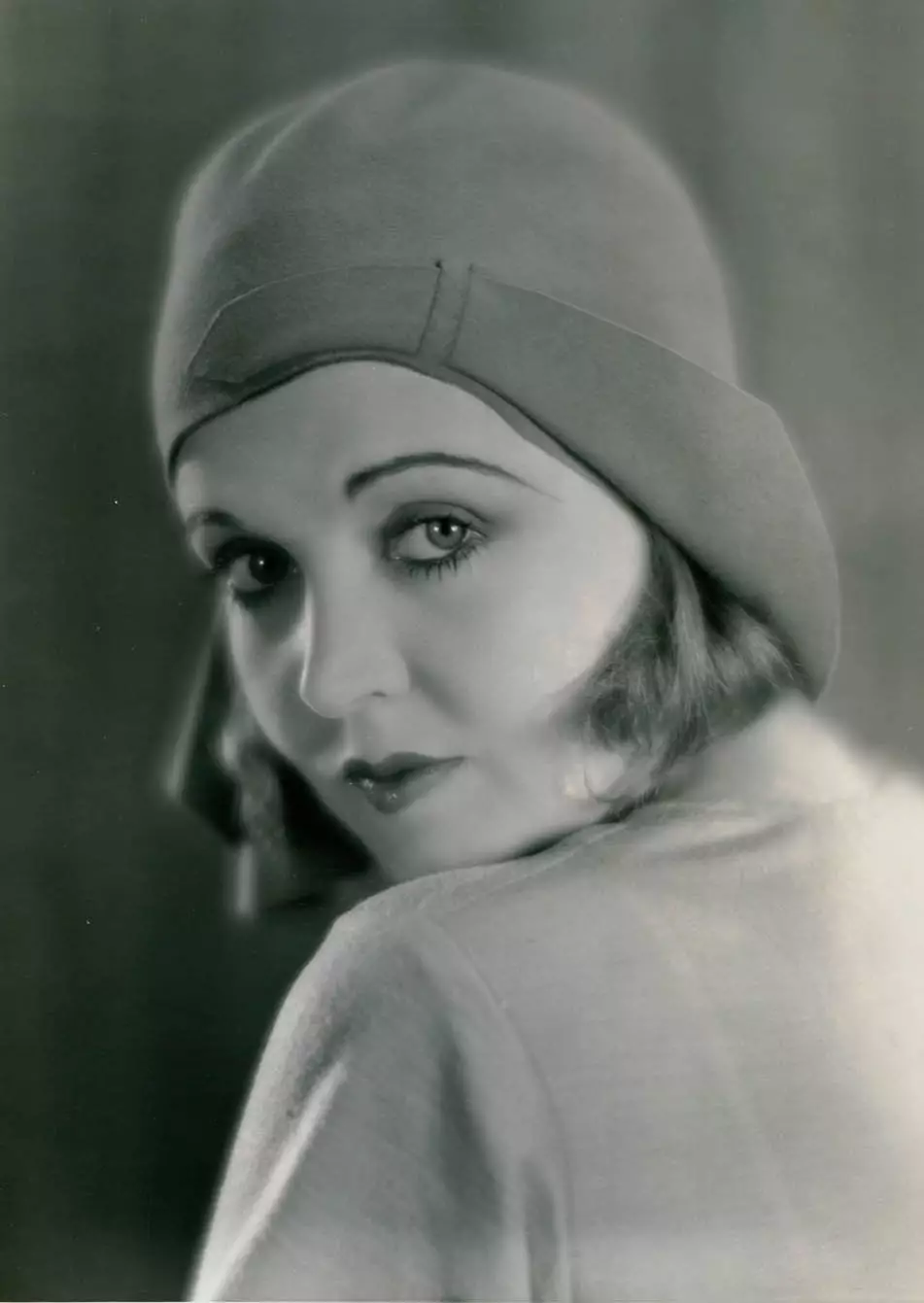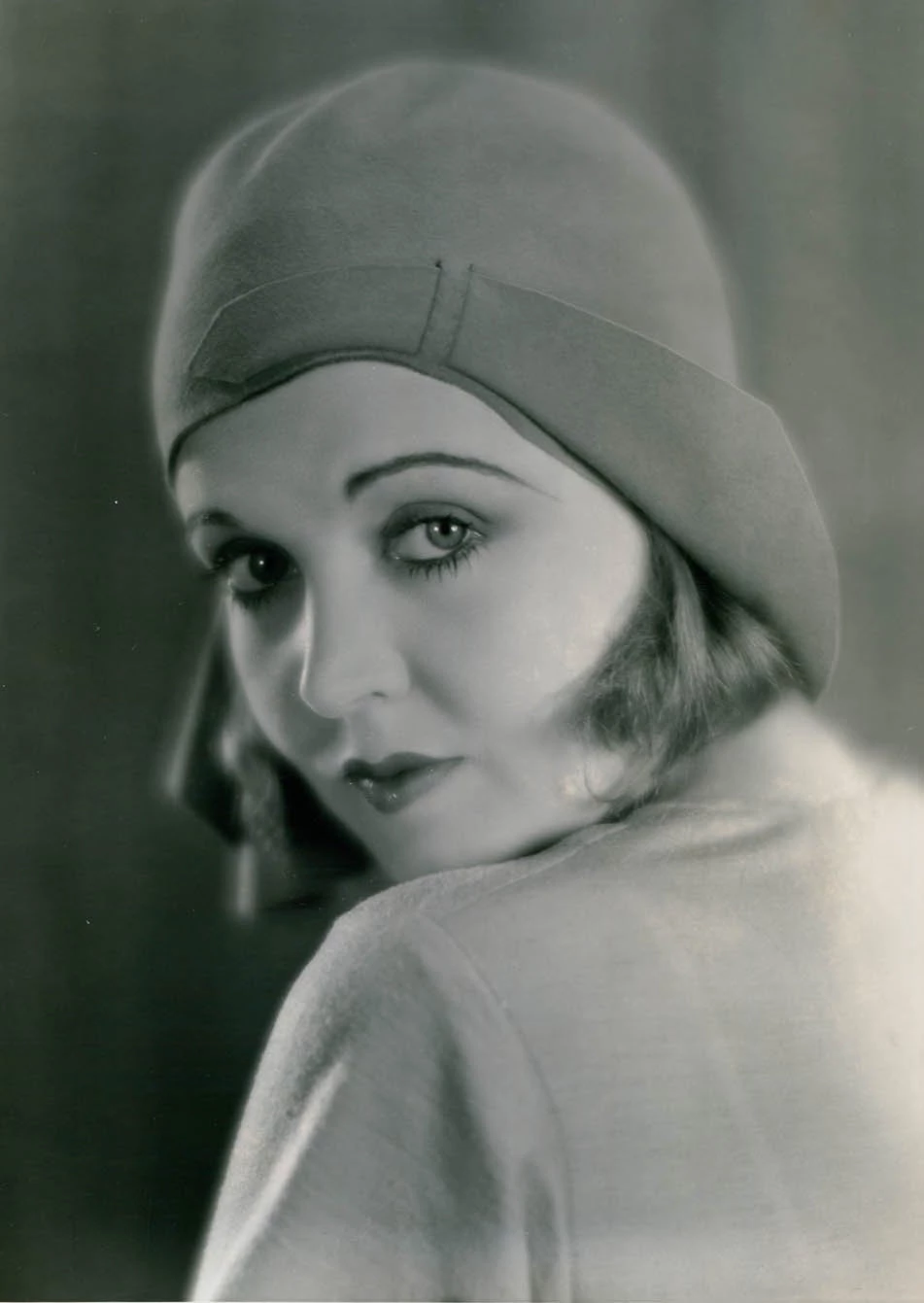Delroy, Irene
Josephine “Joey” Lucille Sanders was born on July 21, 1900 to Royal W. and Della (Soverns) Sanders. Royal was a teacher and coach at Bloomington High School when he met his future wife Della, who was a student who played on the girls’ basketball team that he coached. Josephine, like her mother, spent her formative years attending Bloomington schools. But around 1908, her father Royal accepted a sales position with Johns-Manville (a Colorado-based insulation and roofing company) and the family moved to New Orleans, and then to Minneapolis. In 1909, both Joey and her younger brother, Findley, contracted scarlet fever. Joey survived, but her brother did not. After burying him in Bloomington, the family moved to Chicago where Royal continued to work for Johns-Manville.
Self-described as skinny and weak after her illness, Joey’s doctor suggested “esthetic dances, taken in small doses to put a bit of flesh on her spindly legs, and perhaps coax the irregular heart out of its reluctance.” While living in Chicago, she began to take ballet lessons, an activity that transformed both her heart and body.
Joey returned to Bloomington around 1913 and lived with her paternal grandparents (James and Sue Sanders) while she completed high school—two years at Bloomington, and then two years at University High School. Her senior prom date was with none other than Adlai E. Stevenson II, whom she remained friends with until his death in 1966.
In 1918 Joey tried out for and earned a ballet part at the Chicago Grand Opera. Her father insisted she go to college, so she promised to do so after completing her contract in Chicago. But she traveled to New York that same year and soon took a role in the raunchy 1919 comedy A Night Off—which failed immediately. However, she continued to get roles—the next being in an off-Broadway review, G.M. Anderson’s The Frivolities of 1919. By then she claimed to be two years younger than her actual age and was using the stage name Irene Delroy—a combination of the first three letters of her mother’s and father's first names who, by then, had both acquiesced to her desire to be a performer. For the next few years, Irene sang, danced, and honed her comic skills doing vaudeville in New York and touring across the country. Whether by choice or a requirement due to her youth, Irene was always accompanied by a chaperone—her mother Della—a circumstance that continued throughout Irene’s career and that effectively destroyed her parents’ marriage.
In 1923 Irene landed the female lead in Hitchy Koo. After the success of this popular Broadway musical revue, Irene joined the Greenwich Village Follies, touring across the United States in addition to London, England. Press releases for tour performances noted, “The opulently endowed Irene Delroy is the vivacious and distractingly beautiful ingenue of the Greenwich Village Follies… Her ankles and her dimples are among the most alluring to be found on the contemporary stage.” Irene’s popularity grew, and in a short time her name rose to the top of the billing. When the Greenwich Village Follies folded, she was immediately picked up by the Ziegfeld Follies.
From 1923 to 1930 she had great success, including leading roles in the musicals Here’s Howe and Follow Through. She was recognized as “one of the best comedy ingenues on Broadway.” Ziegfeld insured Delroy’s famous legs and ankles, which were regularly discussed and admired in the newspapers, for $100,000 (or approximately $1,750,000 in 2022).
Dismayed by the focus on her physical attributes, in early 1926 Irene penned a newspaper article in which she noted, “The newspapers have said much about my ankles and dimples. Where is the dramatic critic who will toss off a few superlatives regarding the acting of Irene Delroy?” Later that year, she clarified her ambition to be a serious actress, declaring, “I want to make people cry.”
Between 1926 and 1927, she teamed up with the famous dance instructor Arthur Murray in a series of photo articles that provide step-by-step instructions for popular dances like the Fox Trot and Charleston. The series, printed in hundreds of newspapers across the U.S., made her a familiar face to a new and broader American audience.
In 1929 Delroy was spotted by a Hollywood producer during a performance of the Broadway musical Top Speed (backed by Warner Bros.) and was invited to do a screen test. The following year she left New York for Hollywood and was soon performing in front of a Warner Bros. camera. Her first movie was Nancy in Naples (later renamed Oh, Sailor Behave!). “I thought I was too terrible for words when I saw the first rushes [movie terminology for unedited footage],” said Delroy. “I remember I came out of the projection room crying and met Jack Warner in the hall. ‘You’d better tear up my contract’ I told him, ‘I know I’m dreadful. . . I’m going back to New York.’ But after he watched the rushes, he sent word to me that I was to stop worrying and go on working. He liked me, and if he thought I was all right, nothing remained to be said on the subject.”
Shortly after that, Irene’s Warner Bros. contract was extended to four movies. Her next endeavor was Life of the Party (1930), then Divorce Among Friends (1930), and finally Men of the Sky (1931). Having completed four films in a little more than a year and with a new contract for more movies, Irene returned to New York in the spring of 1931 for a respite.
Irene had many admirers during her career, including Larry Fay (a notorious Prohibition rumrunner and New York nightclub owner), and New York mayor and playboy, Jimmy Walker (who likely introduced Irene to his good friend William L. Austin, Jr., a real estate tycoon with Atlantic City investments who owned two clubs on Long Island). Irene was strong willed and determined to be successful, but still struggled with the pressure of being in the spotlight, as well as the growing tension between her parents when they did not agree on who Irene should associate with and how Irene should manage her money. Her mother had long hoped for an advantageous marriage for Irene and was disappointed when she declined proposals of marriage. So, when Irene accepted William Austin’s proposal—to the dismay of her many admirers—her mother was ecstatic. The couple married on July 15, 1931, with the nuptials performed by Mayor Walker.
At the time of her marriage, Irene had a lucrative long-term contract with Warner Bros. But Austin, wanting her to retire, offered her a prenuptial agreement that included a large amount of stock in his company if she canceled the contract. Irene reluctantly signed. While on their honeymoon, she and Austin were horseback riding in Montreal, Canada when she was thrown from her horse and sustained a cracked skull, broken fingers, and a hip injury. On July 22, 1931, she announced, “I’ve given up all thought of acting again.” This likely came as no surprise, as Irene had often spoke of retiring to domestic life when she married. But domestic bliss was not in the cards for her. Not long after recovering from her injuries, Austin put Irene to work as a hostess in one of his clubs. By 1935 they had separated. Irene went back to Broadway, performing in Victor Moore's Anything Goes—her last contract. She also returned to radio work using the name Josephine Austin—she waited for favorable reviews at which time it was revealed that she was Irene Delroy. Irene divorced Austin in 1937 on “charges of cruelty.” She spent a good deal of 1940 with her agent, Louis Shurr, in Hollywood, looking for movie roles, but to no avail. During the Second World War, she was a volunteer nurse’s aide at Memorial Hospital in New York. Many years later, in 1972, she married Dr. Girard F. Oberrender. They made their home in Ithaca, New York where she died in 1985.
Irene Delroy’s charismatic charm, quick wit, stage presence, and drive for success gained her fame and fortune. But few got close enough to see that she was also very intelligent—well read in politics and history, and capable of holding her own on just about any topic of conversation.
The McLean County Museum of History is fortunate to have a large collection of objects associated with her career and family, as well as a large archive collection that includes 1,400 photographs of her.

